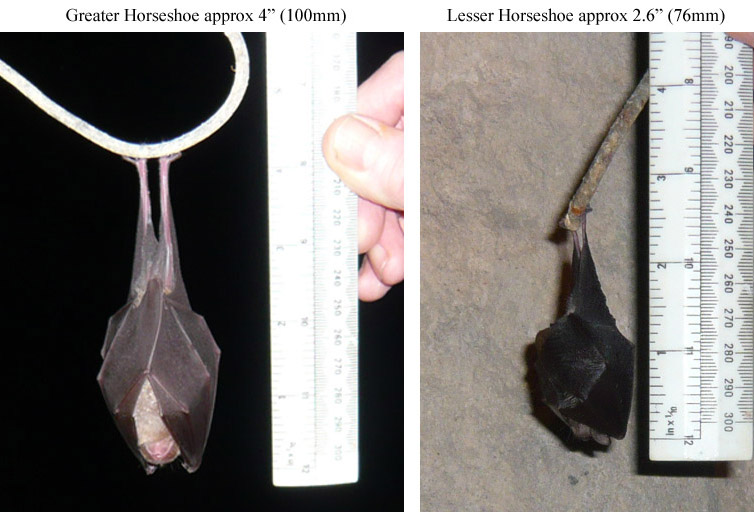THE BATS OF
BEER QUARRY CAVES
Beer Quarry Caves is internationally important as a bat hibernaculum. Greater and Lesser Horseshoe bats, along with a few other types use the caves to hibernate in the winter. During hibernation they often wake up and move in their search for suitable temperatures. Greater horseshoe male bats often hibernate in clusters, but females and all lesser horseshoes tend to be more solitary.
The horseshoe bats can be distinguished from other British bats by the presence of a complex horseshoe-shaped nose leaf which is related to their particular type of echo location system. When roosting they hang free with the wings more or less enfolding their body.
Many other of the 17 varieties of English bats use the caves to hibernate, but in much fewer numbers including Daubenton’s Bat, Natterer’s Bat, Whiskered Bat and even the very rare Bechstein’s Bat.
The numbers hibernating year to year will vary considerably.
For more Horseshoe bat details click to visit the Devon Greater Horseshoe Bat Project website.
Bat Cam
Sorry, the Bat Cam is offline awaiting repair.
This is an infra red high quality camera permanently on.
In Winter it will show the Greater Horseshoe bats as they hibernate on 3 wires that are situated just off the Wagon Road.
In Summer you will be able to watch tours as they go past.
Bat Count 9th January 2025
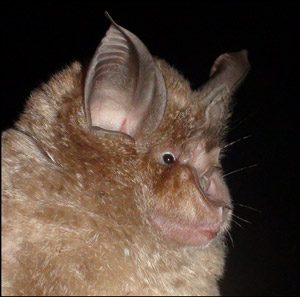
Greater horseshoe
The Greater Horseshoe bat is one of our largest bat species, the size of a small pear. It’s head and body length is 57 – 71mm (2.2″ – 2.8″) and Wingspan is 350 – 400mm (13.8″ – 15.7″) and eats Chafers, dung beetles, noctuid moths, crane flies and caddis flies. They have an almost constant echo location frequency call of about 82kHz. On a bat detector a series of continuous warbles can be heard.
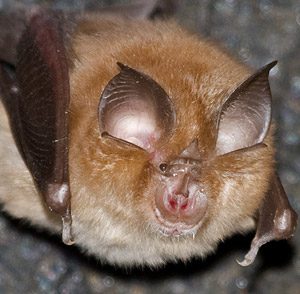
Lesser horseshoe
The Lesser Horseshoe bat is one of the smallest British species, being around plum-sized. It’s head and body is 35 – 45mm (1.4″ – 1.8″ and wingspan 200 – 250mm (7.8″ – 9.8″) and eats flies (mainly midges), small moths, caddis flies, lacewings, beetles, small wasps and spiders. They have an almost constant echo location frequency call of about 110kHz. On a bat detector a series of continuous warbles can be heard.
Will I See Bats on the Tour?
That depends on when you visit. A few Bats can be found right up to the end of May, but during the Summer months they are in their Maternity roosts in old barns etc. During late September and October you may be lucky and see the odd bat maybe flying around.
The bats never fly too close to the groups and they are not dangerous, but they will amaze you with their flying speed and dexterity.
Click here for a BBC One Show video of Greater Horseshoe bats.
This video from East Devon AONB shows how ‘Looking out for bats’ is arranging special behind the scenes access for local school groups.
104 Bats on Wires
These are mostly male Greater Horseshoe bats on 16th January 2012.
21 bats are on the near bright string, then 43, finally 40.
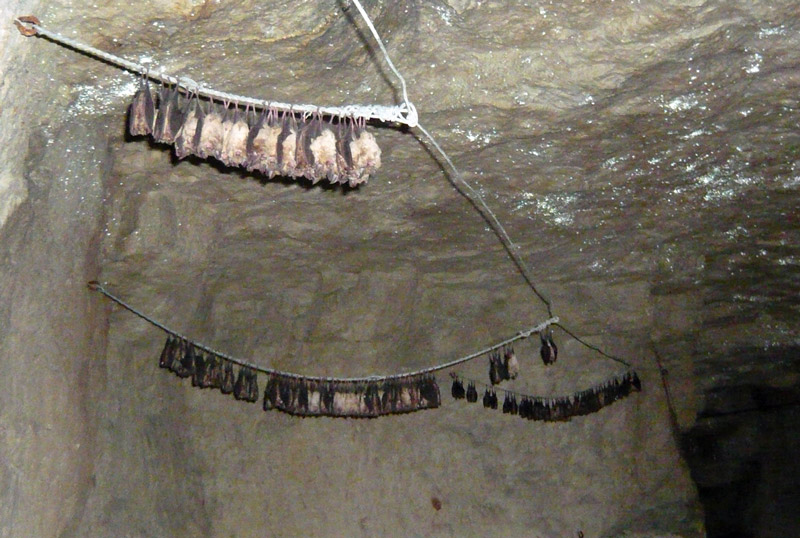
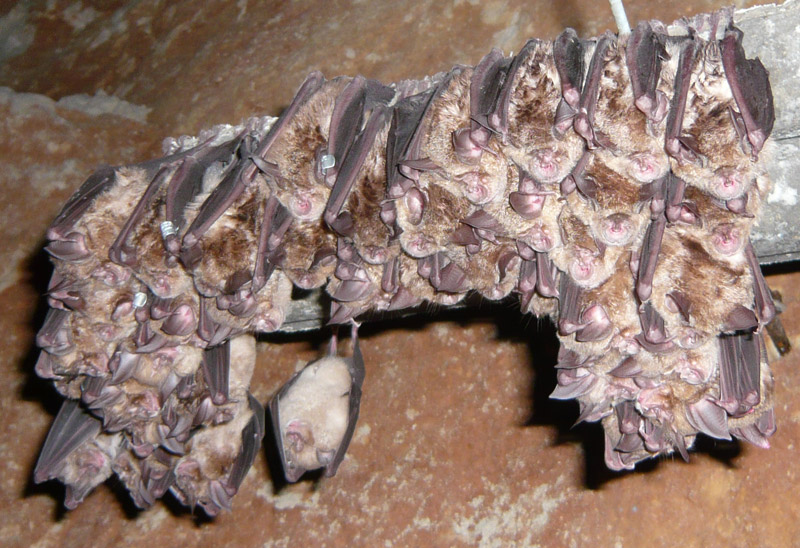
41 Greater Horseshoes
These are mostly male Greater Horseshoe bats on 11th Jan 2011 tightly huddled together.
In 2011 there were 118 Greater and 127 Lesser Horseshoe and 12 Myotis unrecognised.
This is quite deep in the Caves as it was a very cold winter.
Compare Horshoe Bats
The measurements refer to the total length of the bat, not just the body.
The Greater’s head and body is approx 2.6″ (76mm) and the Lesser’s approx 1.5″ (38mm)
